In a Chicago pizza joint last year, I joined four hungry locals in ordering a pizza from Lou Malnati’s, a classic Chicago chain. A deep-dish novice, I sat quietly outraged at what I thought was a rather prudish order of a single pie. At most, we could evenly divide the pizza into a slice and a fraction of another. It was only until halfway into my first slice that I had finally realized what everyone else at the table had grown up knowing: Chicago pizza is a beast.
A lifetime of thin-crust preferences has led me to demolish slice after slice without thought, taking down minimally half a pizza order, depending on size. To have a starvation-level hunger smacked down by a single slice felt like an embarrassment. A couple of us made idealistic moves towards a second slice but despite our efforts we still walked away with leftovers.
Deep-dish pie looks more like actual pie than the flatbread pizza of the rest of the world. Toppings are layered upside-down with a chunky tomato sauce keeping quiet the secrets of what lies below. Chicago-style pizza is all but overlooked in San Diego, but the spirit lives on strong in the few places that do champion the style.
Berkeley Pizza is an oasis from the soulless clumping of restaurants and bars tourists so lovingly refer to as the Gaslamp District. They bait the hot mess of drunk fools and hoards of clubbers roaming the streets with a chill vibe, respectable lineup of beers, late hours, and pizza by the slice. Berkeley Pizza has recently cast a net in North Park, a fresh pond of drunk fools, with a new location posted up between Coin-Op Game Room and The Office. It was from here I ordered a couple slices, a classic pepperoni and their signature combo of spinach & mushroom, to be whisked home between two paper plates for a pairing.

Such a rich and robust pizza requires a rich and robust wine to match. Acidity is also important so to the Old World we go, specifically the Rhône Valley in southern France. Once a papal summer palace, Châteauneuf-du-Pape is a Southern Rhône region that produces red wines made from a blend of up to 13 different varietals, with Grenache at its core.
Châteauneuf-du-Pape is one of Robert Parker’s favorite styles of wine, which he prizes for its immediate parade of “intellectual and hedonistic elements” that generally takes great age-worthy wines decades to develop. Robert Parker reflects this same attitude in many of the wines chosen for high scores on his 100-point scale, providing consumers looking for those ripe and approachable styles a shortcut in research. While I dabble in the other end of the stylistic spectrum these days, I began my love of wine with juicy, sun-humped wines of the New World and moved away only to explore other styles for education purposes. Though I never returned, I can always enjoy a plumped up red, hedonistic and generous with fruit.
Hedonistic is right. The 2012 Domaine de Saint Siffrein (Châteauneuf-du-Pape) opens up hot and lush with stewed berry aromas of raspberry and blackberry pie on a backdrop of matted earth and dried leather. With just enough acidity to balance the wine’s weighty presence, the Châteauneuf-du-Pape is bold enough to handle the monster punch of flavor divvied out in each bite. Meanwhile, the tomato sauce is alive, racy with acidity, fighting an internal battle with globs of cheese and thick, buttery crust threatening to overwhelm the senses. Shockingly, the crust is sturdy enough handle the lasagna of weight above and all can be managed without a fork and knife. And thank the pizza gods for that, lest we disappoint Jon Stewart.
 With all toppings drenched beyond recognition with pizza sauce and cheese, there is almost no perceptible difference between the two different slices except for the intense animal charisma and lingering spice brought on by the pepperoni. The spiciness, while subtle, doesn’t bode well for the Châteauneuf-du-Pape as perception of alcohol, considerably elevated for an Old World wine, is exacerbated by spiciness in food. In the wake of this realization, I reach for a different bottle of the same region in France to play nice with the pepperoni slice.
With all toppings drenched beyond recognition with pizza sauce and cheese, there is almost no perceptible difference between the two different slices except for the intense animal charisma and lingering spice brought on by the pepperoni. The spiciness, while subtle, doesn’t bode well for the Châteauneuf-du-Pape as perception of alcohol, considerably elevated for an Old World wine, is exacerbated by spiciness in food. In the wake of this realization, I reach for a different bottle of the same region in France to play nice with the pepperoni slice.

In the neighboring Northern Rhône, red wines showcase Syrah almost exclusively, where the varietal displays aromas of cured meats, olives and leather with black pepper and a medley of dark berries. The comparatively cooler climate of these northern vineyards offers up a bit more acidity to their fruit, and allows for leaner alcohol levels in wine while keeping a firm and powerful frame. Some of the most classic representations of Syrah come from small regions such as Cornas and Hermitage. Though variable in quality as the largest appellation of Northern Rhône, St. Joseph is stylistically similar at a fraction of the cost. The nose on the 2012 Domaine Vincent Paris (St. Joseph, les Côtes) is rich with a sense of copper and rust with raspberries on the palate. The leaner alcohol and higher acidity allow the meat and pepper aromas to play amongst its flavor companions in each bite.
The story ends happily, with the signature pie finding a dance partner with the Châteauneuf-du-Pape while the pepperoni slice took the spotlight with St. Joseph pulling off coordinated dance moves too good not to have been choreographed ahead of time.


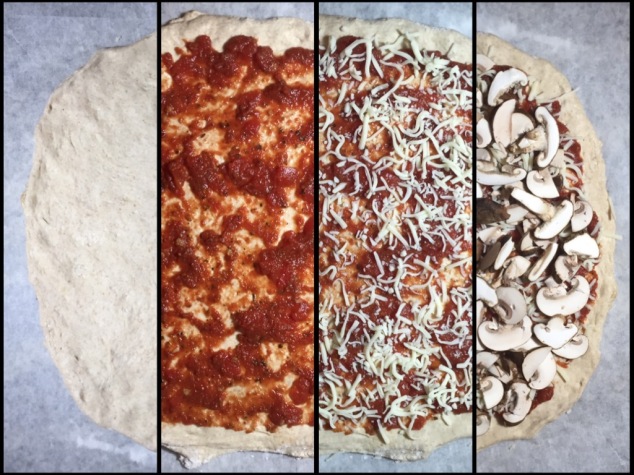
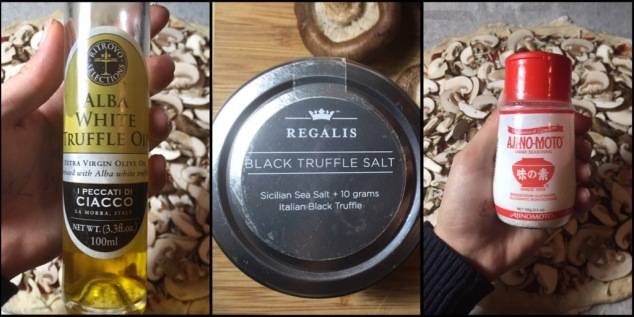
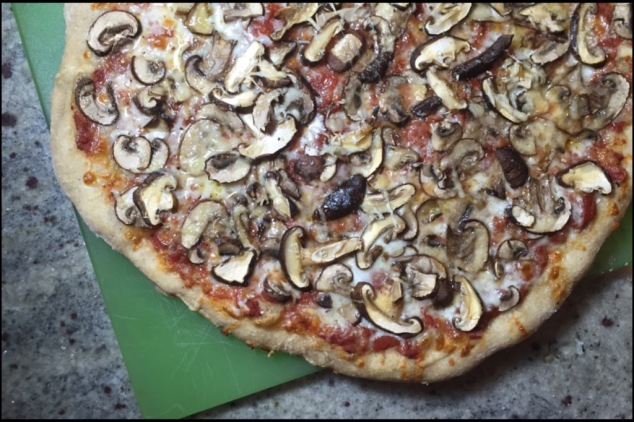
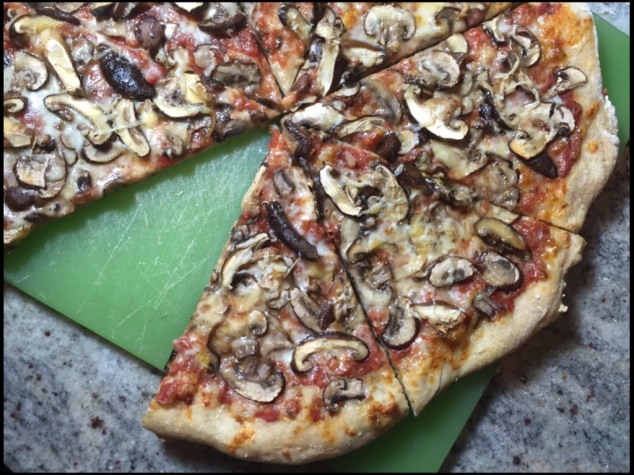


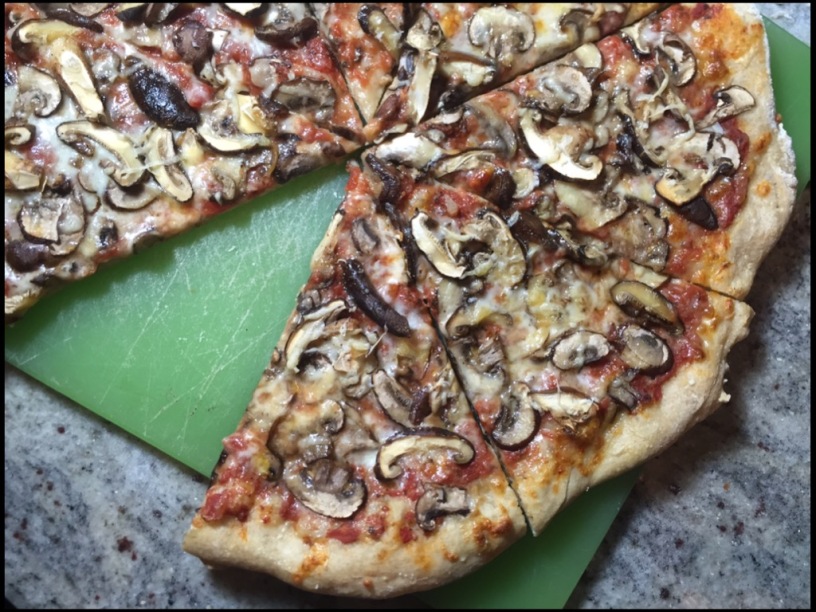



















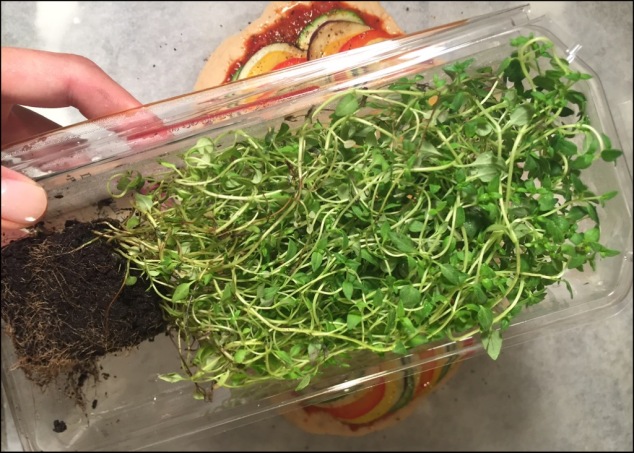

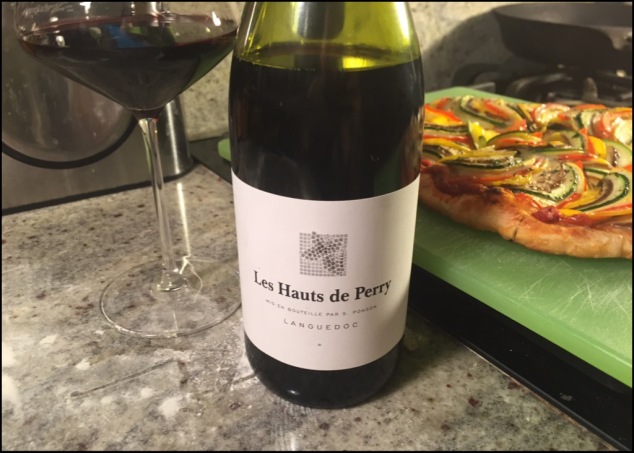




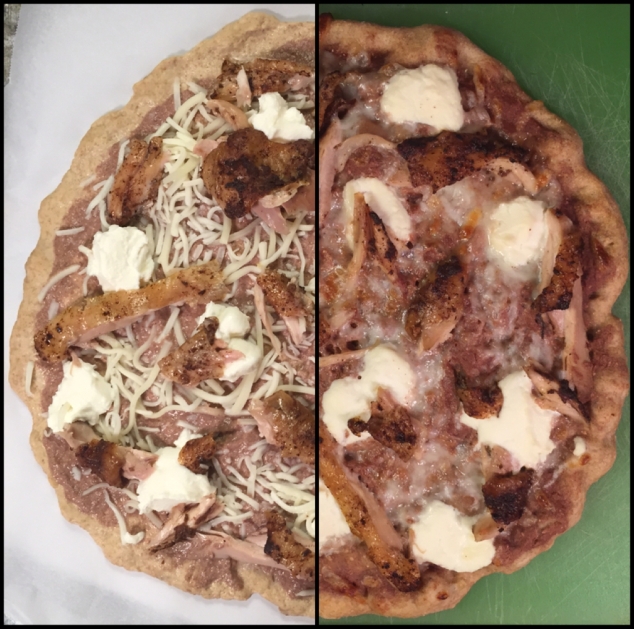









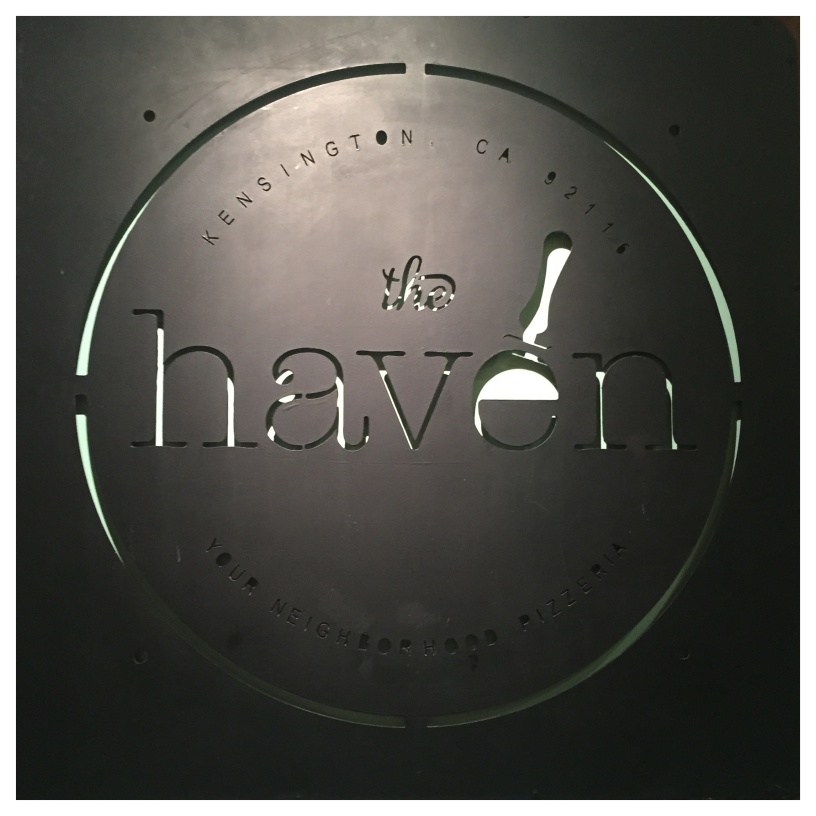
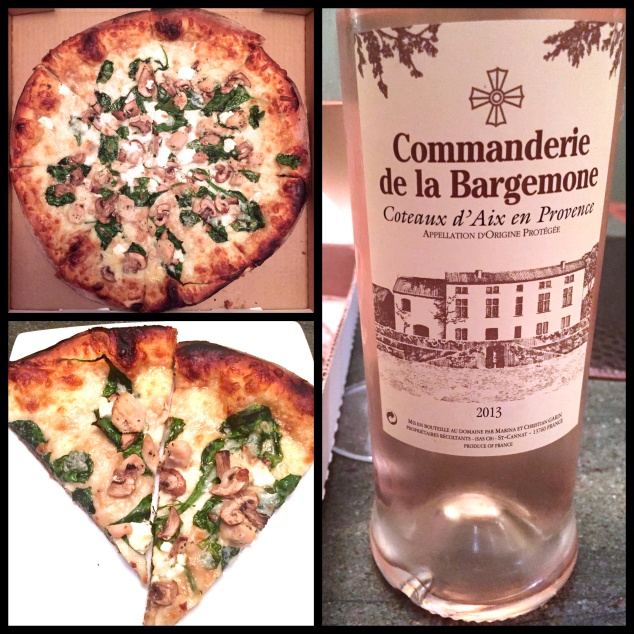






 With a name deserving to belong on an Olive Garden menu, the Gouda Garlic Alfredo is surprisingly light, with chicken, spinach and sun-dried tomatoes driving the true flavor profile. Tomato acted as the diva of the bunch, bursting with personality and juicy, concentrated musk while the gouda was shy with just a twang of nuttiness. Even the garlic was subdued by the soft vegetal tones brought on by the greens. And chicken was there being chicken, offering texture and support to all its more flavorful companions. Unfazed by any smattering of red pepper flakes or garlic undertones, the Beaujolais Blanc drove the midnight snack forward with each sip invigorating the palate for more. And so it goes, the pizza was reduced to mere crumbs and crust, concluding this pairing adventure with one momentous realization: Beaujolais Blanc is rad.
With a name deserving to belong on an Olive Garden menu, the Gouda Garlic Alfredo is surprisingly light, with chicken, spinach and sun-dried tomatoes driving the true flavor profile. Tomato acted as the diva of the bunch, bursting with personality and juicy, concentrated musk while the gouda was shy with just a twang of nuttiness. Even the garlic was subdued by the soft vegetal tones brought on by the greens. And chicken was there being chicken, offering texture and support to all its more flavorful companions. Unfazed by any smattering of red pepper flakes or garlic undertones, the Beaujolais Blanc drove the midnight snack forward with each sip invigorating the palate for more. And so it goes, the pizza was reduced to mere crumbs and crust, concluding this pairing adventure with one momentous realization: Beaujolais Blanc is rad.